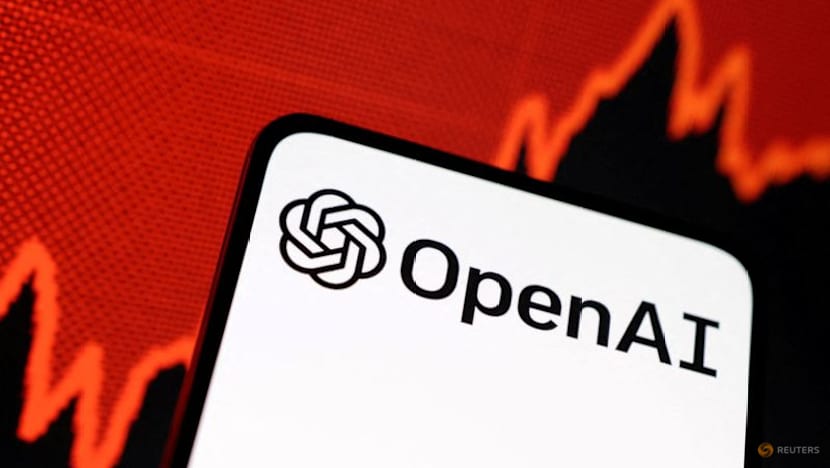Commentary: AI bubble trouble talk is overblown
For the foreseeable future, the market is facing a shortage of capacity – hardly the conditions that spell imminent disaster, says Richard Waters for Financial Times.

SAN FRANCISCO: Stock market veterans often say that it’s impossible to tell when you’re living inside a bubble. Truly irrational behaviour only becomes clear in hindsight, when sanity has returned. So why, suddenly, has talk of an AI bubble become so prevalent?
Expectations are certainly running well ahead of current reality. That is the nature of any new technology, as investors try to predict the scale of a market that is still taking shape.
But even if valuations are stretched, it doesn’t mean AI investment is facing the kind of general implosion that happens when bubbles collapse in on themselves, rather than with the sort of severe corrections that often follow tech stock booms.
The bubble theorists are grappling with two interrelated issues. One is an overbuilding of data centres that could leave a massive overhang of stranded assets. The other is the risk that some stock market valuations have completely lost touch with reality.
BOOM IN DATA CENTRE CONSTRUCTION
Start with the boom in data centre construction. Most of this still lies in the future. Bubble talk really took off around the time OpenAI started disclosing the long-term deals it has put in place to support US$1.4 trillion of planned investments.
Much of this is notional, though: So far, OpenAI and Nvidia have firmly committed to building only a tenth of the potential capacity covered by their giant, US$100 billion deal. The rest will only follow if demand lives up to the companies’ hopes, and if other investors can be found to foot the bill.
For the foreseeable future, the AI market is facing a shortage of capacity – hardly the kind of conditions that spell imminent disaster.
It’s certainly true that, on current projections of new construction, supply is set to catch up well before the AI companies are able to monetise their extra capacity.
In a post on X last week, OpenAI chief executive Sam Altman pinned his company’s hopes for hitting its revenue targets on initiatives it hasn’t even launched yet, from a new push to sell AI to business customers, to potentially entering markets such as cloud computing and robotics.
Even if this points to a yawning gulf between the costs of building new data centres and the AI revenue they are expected to generate, it’s too early to tell how big the gap will be, or how long the revenue lag will last.
THE REAL BUBBLE RISK
Handicapping the rate of growth is different from concluding that the technology, in its current form, will never be able to support the investments that are planned.
The real bubble risk is that inherent weaknesses in large language models – like their tendency to hallucinate – will limit their usefulness, or that the costs of running them will make them chronically uneconomic for many purposes. It won’t be clear for some time whether this will become a serious barrier to growth.
Investors, of course, may get spooked even before that moment comes. Cutting off capital would become a self-fulfilling prophecy, hitting companies tied to the build-out. Yet that kind of dislocation, while hammering a company like OpenAI, would leave companies with stronger balance sheets, like Google and Microsoft, well placed to take more share in an AI market they have pinned their companies’ futures on.
If expectations are reset or delayed, then tech stock valuations would certainly take a bashing – though, again, it need not lead to the kind of severe, lasting collapse that is characteristic of a bubble bursting.
After the dotcom bust, it took the NASDAQ 16 years to make a lasting break back above its previous peak. Some tech stocks caught up in the AI boom could face that kind of prolonged winter.
Palantir, valued at around 250 times this year’s earnings, is benefiting from AI demand but could take many years to grow into its current valuation. But the price/earnings multiples of the biggest tech companies, though higher than their long-term averages, are not above levels they have seen at other points during the long tech boom.
The demand for AI chips, meanwhile, continues to soar, prompting AMD this week to predict an annual market of US$1 trillion by 2030. Nvidia is widely expected to underline the boom when it reports its latest earnings next week. Chip stocks are usually deeply cyclical, and a pullback in data centre spending would cause a serious dent, but that moment is not yet in sight.
All of this suggests that companies riding the AI boom could be vulnerable to an across-the-board retreat that in some cases would be severe. But that doesn’t necessarily mean that AI has a case of bubble trouble.















